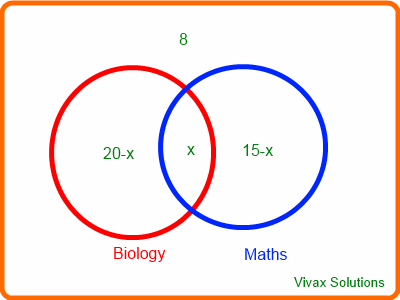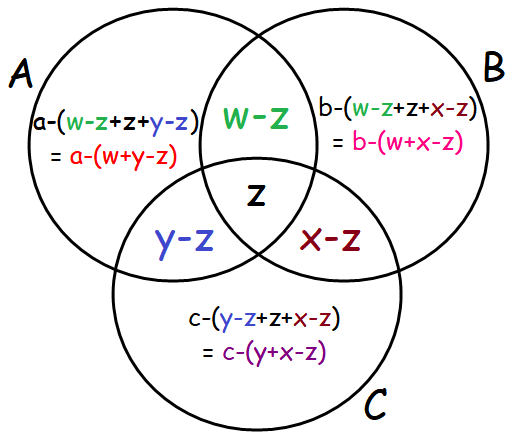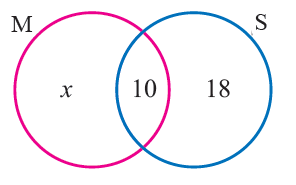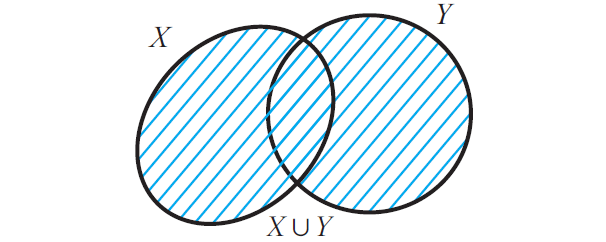Venn Diagram Solving For X

That was really his name as a way of picturing relationships between different groups of things.
Venn diagram solving for x. But as the 3 circle venn diagram below shows it can be used to solve many other problems. Using a 3 circle venn diagram to solve problems. Let the number who do both be x. 20 of them doing biology.
Venn diagram word problems with 2 circles example 1. I got x 11 but then when i rechecked it didnt add up. Using sets to solve problem. 20 x 15 x x 8 40 x 3 the number who do both 3.
You may be asked to solve problems using venn diagrams in your exam. Out of forty students 14 are taking english composition and 29 are taking chemistry. Venn diagram word problems generally give you two or three classifications and a bunch of numbers. You then have to use the given information to populate the diagram and figure out the remaining information.
X 15 x 13 x 7 31. Venn diagrams were invented by a guy named john venn no kidding. In a class of 50 students each of the students passed either in mathematics or in science or in both. 15 of them doing neither.
In the venn diagram below g represents students selecting geography and h represents students selecting history. Inventing this type of diagram was apparently pretty much all john venn ever accomplished. Find how many students passed in mathematics. Construct a venn diagram and to reprensent this information and solve for x.
Venn diagrams and probability. Jumlah dari semua siswa ialah 31 orang siswa maka. It is really important you draw the venn diagram and add information as you go along. Venn diagrams and conditional probability.
Suppose there are 60 students in a certain class. Use the venn diagram to determine text p g text given h also written text p g h. 30 of them are doing maths. 10 students passed in both and 28 passed in science.
Draw a venn diagram to represent this data and hence find the following. Venn diagrams can also be used to solve conditional probability problems. Solve problems using venn diagrams. Let x be the number of students passed in mathematics.

















